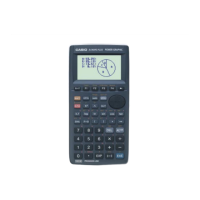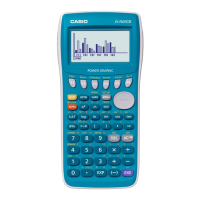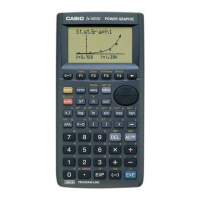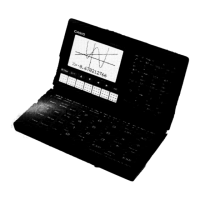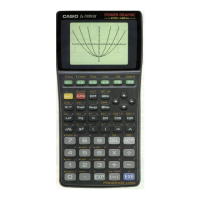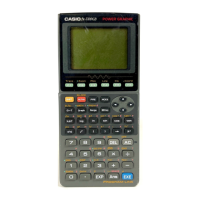45
Differential Calculations Chapter 3
This average, which is called the
central difference
, is expressed as:
uu
uu
uTo perform a differential calculation
Example To determine the derivative at point x = 3 for the function
y = x
3
+ 4 x
2
+ x – 6, when the increase/decrease of x is defined as
!x = 1E – 5
Input the function
f(x).
AK2(CALC)[1(d/dx)
TMd+eTx
+T-g,
Input point
x = a for which you want to determine the derivative.
d,
Input !x, which is the increase/decrease of x.
bE-f)
w
• In the function f(x), only X can be used as a variable in expressions. Other vari-
ables (A through Z) are treated as constants, and the value currently assigned to
that variable is applied during the calculation.
• Input of !
x and the closing parenthesis can be omitted. If you omit ! x, the calcu-
lator automatically uses a value for !x that is appropriate for the value of x = a,
which you specified as the point for which you wanted to determine the deriva-
tive.
• Discontinuous points or sections with drastic fluctuation can adversely affect pre-
cision or even cause an error.
• Note that you cannot use differential calculation inside of a differential calculation
term.
1 f (a + !x) – f (a) f (a) – f (a – !x)
f '(a) = ––
––––––––––––– + –––––––––––––
2 !x !x
f (a + !x) – f (a – !x)
= –––––––––––––––––
2!x
